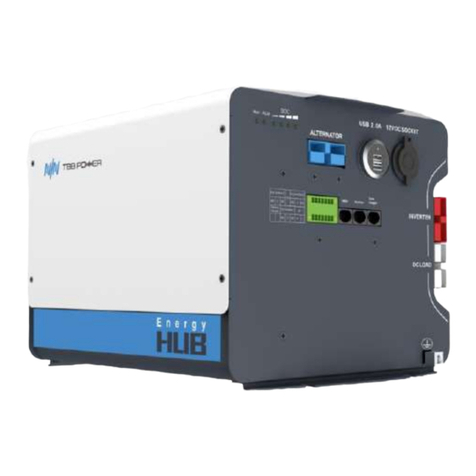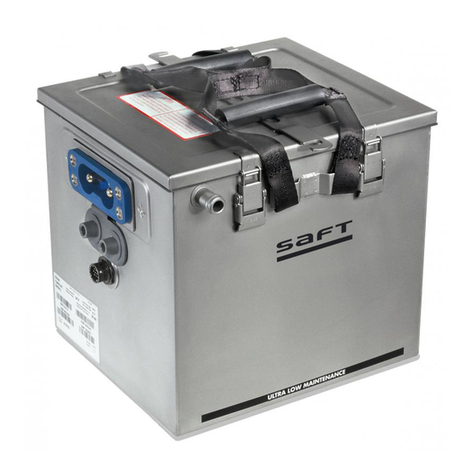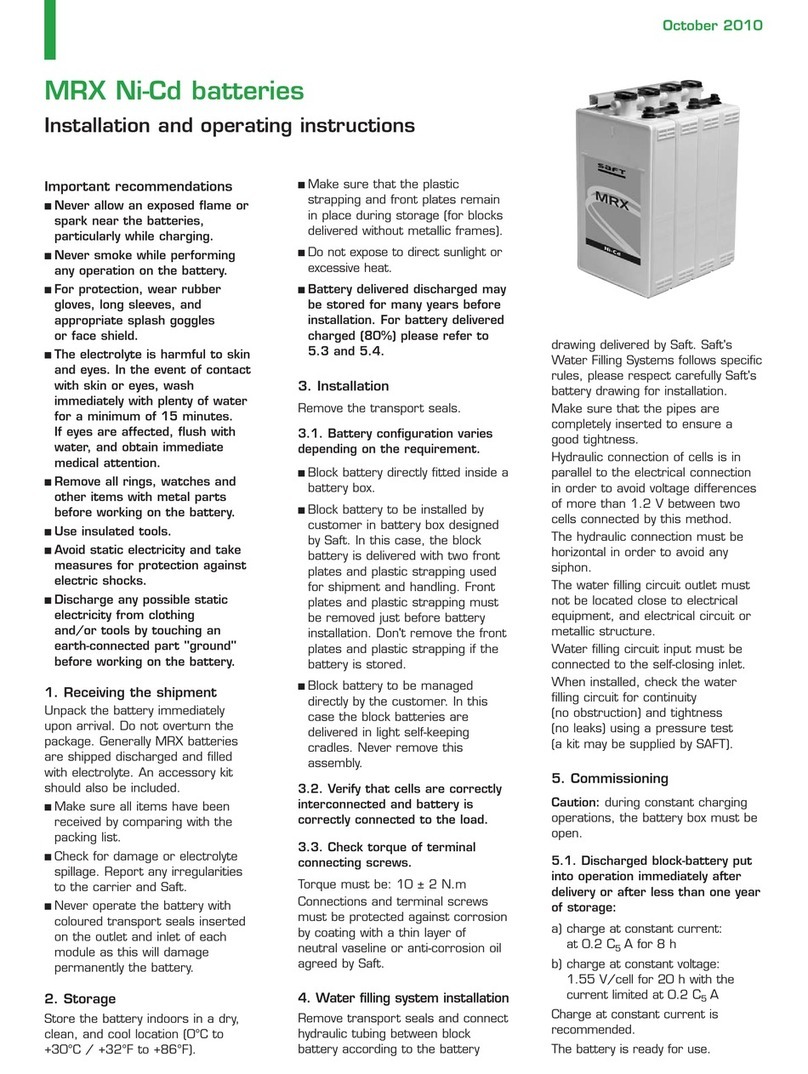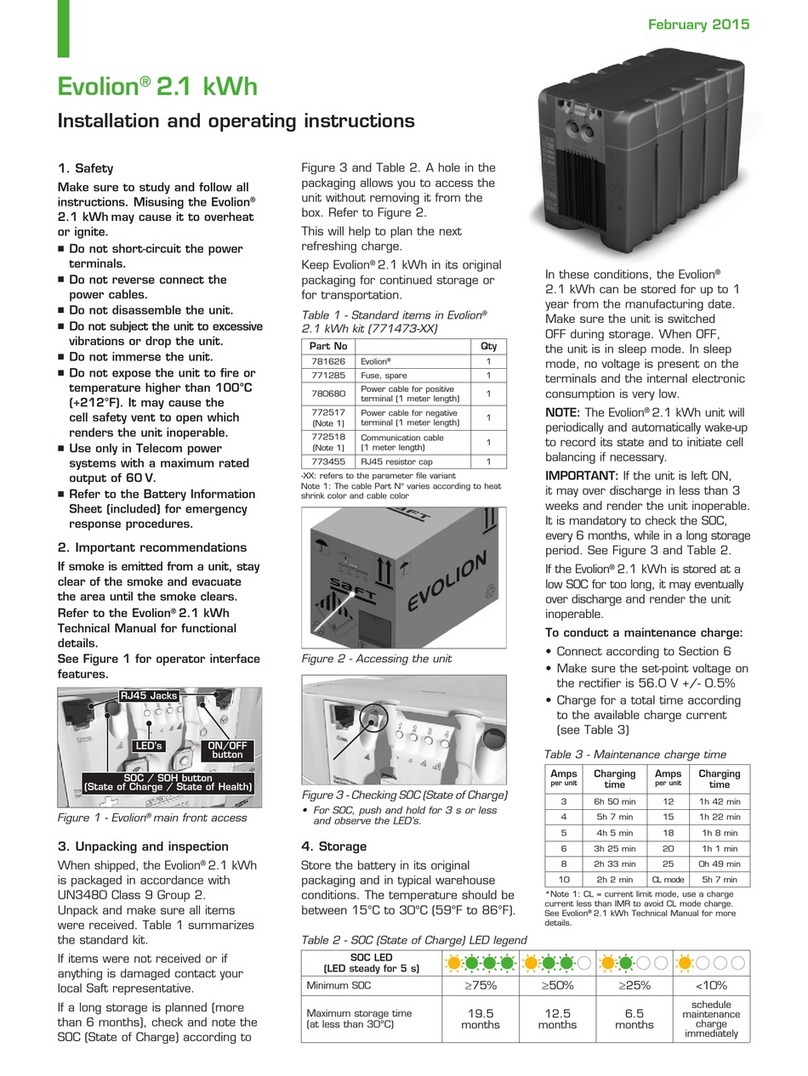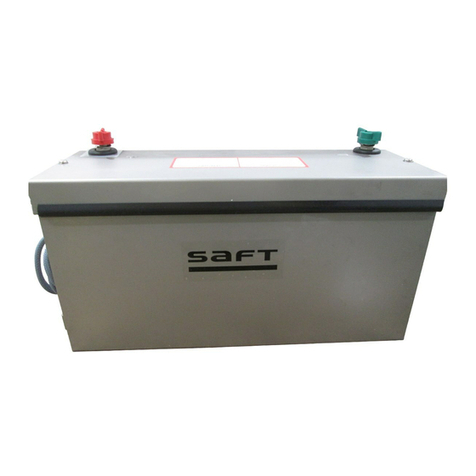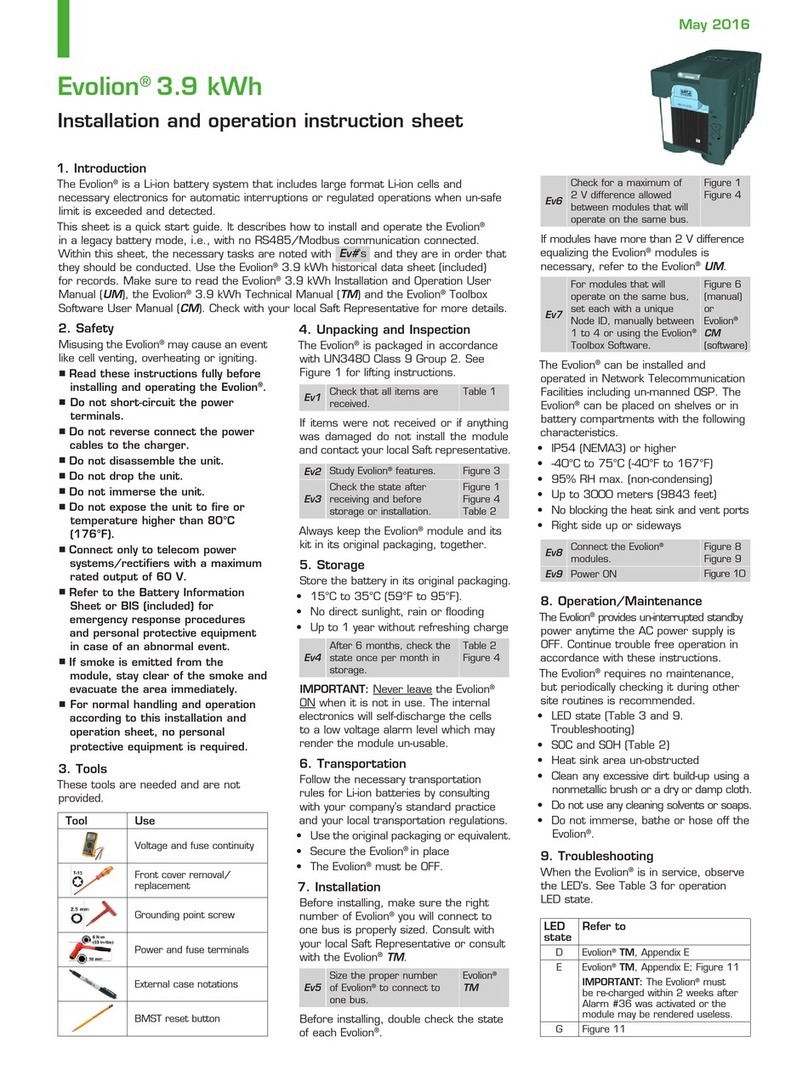
Important recommendations
■ Never allow an exposed flame or
spark near the batteries,
particularly while charging.
■ Never smoke while performing any
operation on the battery.
■ For protection, wear rubber gloves,
long sleeves, and appropriate
splash goggles or face shield.
■ The electrolyte is harmful to skin
and eyes. In the event of contact
with skin or eyes, wash immediately
with plenty of water. If eyes are
affected, flush with water, and
obtain immediate medical attention.
■ Remove all rings, watches and
other items with metal parts before
working on the battery.
■ Use insulated tools.
■ Avoid static electricity and take
measures for protection against
electric shocks.
■ Discharge any possible static
electricity from clothing
and/or tools by touching an
earth-connected part "ground"
before working on the battery.
1. Receiving the shipment
Unpack the cells immediately upon
arrival. Do not overturn the package.
Transport seals are located under the
cover of the vent plug.
The cells are normally shipped filled,
discharged and ready for assembly.
The cells must never be charged
with the plastic transport seal in
place as this can cause permanent
damage.
2. Storage
Store the cells indoors in a dry, clean
and cool location (0°C to +30°C /
+32°F to +86°F).
■ Do not store in unopened packing
crates. The lid and the packing
material on top of the cells must
be removed.
■ Make sure that the transport seals
remain in place during storage.
■ Do not store in direct sunlight or
exposed to excessive heat.
■ Cells delivered discharged and filled
may be stored for many years before
it is installed.
■ Cells delivered exceptionally 80%
charged (for starting application)
must not be stored more than
3 months (including transport).
SPH Ni-Cd batteries
Installation and operating instructions
3. Electrolyte
The electrolyte to be used is: E4
When checking the electrolyte levels, a
fluctuation in level between cells is not
abnormal and is due to the different
amounts of gas held in the separator
of each cell. The level should be at least
15 mm above the minimum mark (lower)
and there is normally no need to adjust it.
When the cells are charged, the
electrolyte level can be above the
maximum level mark (upper).
4. Installation
4.1. Location
Install the battery in a dry and clean
room. Avoid direct sunlight, strong
daylight and heat.
The battery will give the best perfor-
mances and maximum service life when
the ambient temperature is between
+10°C to +30°C (+50°F to +86°F).
4.2. Ventilation
At normal float charge the gas
evolution is very small but some
ventilation is necessary.
Note that special regulations for
ventilation may be valid in your area
depending on the application.
4.3. Mounting
Verify that cells are correctly
interconnected with the appropriate
polarity. The battery connection to load
should be with nickel plated cable lugs.
Recommended torques for connecting
nuts are:
• M 10 = 10 ± 2 N.m
• M 12 = 15 ± 2 N.m
The connectors and terminal nuts
should be corrosion-protected by
coating with a film of neutral vaseline.
Remove the transport seals and
close the vent plugs.
Install the IP2X protections according to
the assembly instructions in Appendix A
to have the battery compliant to IEC
62485-2/EN 50272-2 standards for IP2
level protection against electrical shocks.
5. Commissioning
Verify that the transport seals are
removed, the vents are closed and
the ventilation is adequate during
this operation.
A good commissioning is important.
Charge at constant current is
preferable. If the current is limit lower
than indicated in the table A, charge
for a proportionally longer time.
■
For filled and discharged cells
stored up to 1 year,
a commissioning charge is normally
not required and the cells are ready
for immediate use.
A commissioning charge as described
in the following section is only
recommended if full performances
are necessary immediately.
■ For cells stored more than 1 year
or for charged cells stored more
than 3 months,
a commissioning
charge is necessary:
• Constant current charge:
charge for 8 h at 0.2 C5 A.
When the charger maximum voltage
setting is too low to supply constant
current charging, divide the battery
into two parts to be charged
individually.
• Constant voltage charge:
1.50 V/cell minimum for 24 h with
current limited to 0.2 C5 A, or for 48 h
with current limited to 0.1 C5 A.
Please note: if cells have been stored
in charged conditions for more than
3 months (including transport), or if
cells have been stored for a few years
or show difficulties in recovering
performance, constant current
charging becomes necessary and the
following values are recommended:
a) 15 h charge at 0.2 C5 A
b) Discharge at 0.2 C5 A down to
1.0 V/cell
c) 8 h charge at 0.2 C5 A
d) The battery is ready for use.
For capacity test purposes, the battery
has to be charged in accordance with
IEC 60623 section 4.
6. Charging in service
At continuous parallel operation, the
battery is on continuous charge and
has only occasional discharges.
Recommended charging voltage
(+20°C to +25°C / +68°F to +77°F):
■ for dual charge level:
• Float level: 1.40 ± 0.01 V/cell
• High level: 1.45 ± 0.01 V/cell
March 2013





